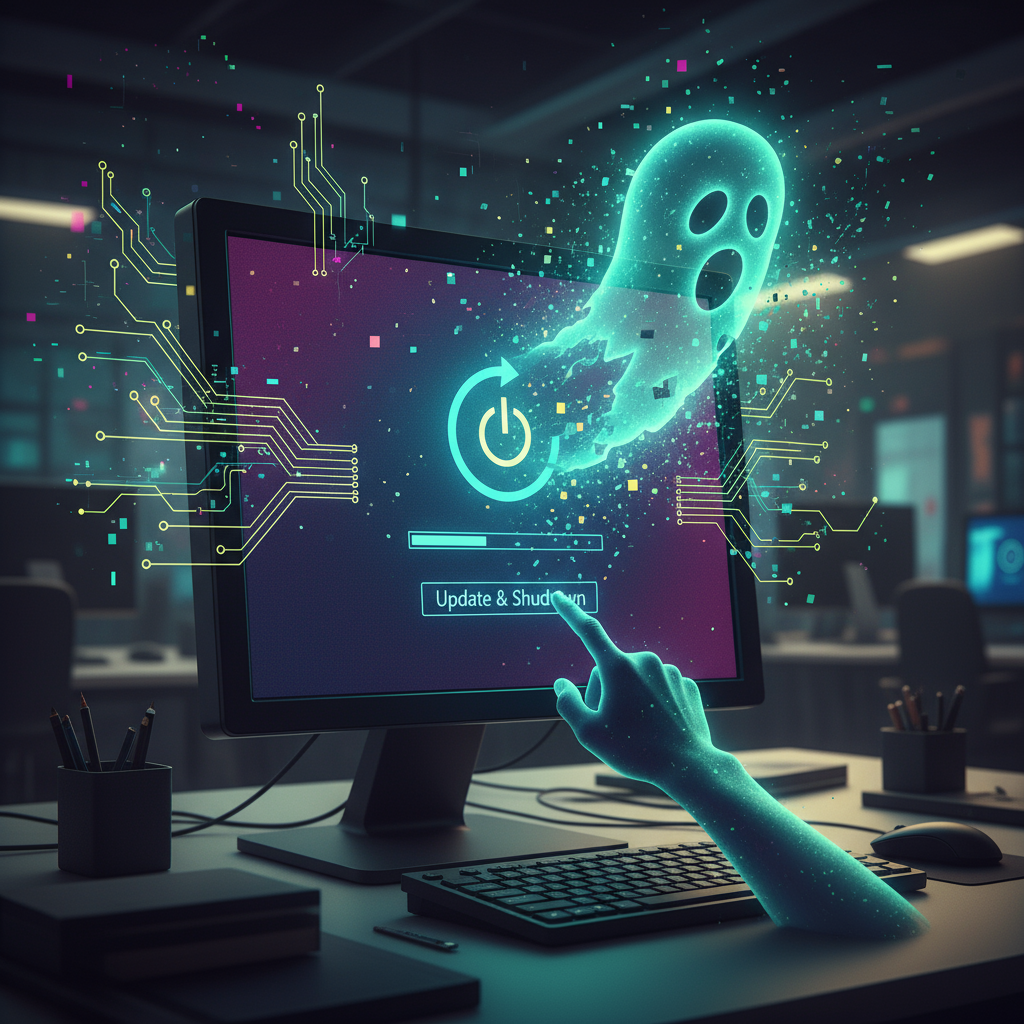Finally Fixed! Windows 11 Kills Off the “Update and Shut Down” Restart Loop After Decades

For years, Windows users have endured a peculiar frustration: clicking “Update and Shut Down” only to have their computer restart instead of powering off completely. This seemingly minor annoyance has plagued countless individuals across multiple Windows versions, persisting through numerous updates and system overhauls. Now, finally, it appears Microsoft is putting an end to this decades-old saga with a patch included in the upcoming Windows 11 25H2 update. Yes, you read that right – decades! Let’s dive into what this means and why it took so long.
The “Update and Shut Down” Conundrum: A Bug Explained

The issue stemmed from how Windows handled the update process in conjunction with the shutdown command. When a user selected “Update and Shut Down,” the operating system would install the necessary updates, but instead of fully powering down, it would often initiate a restart. This behavior was particularly irritating for users who expected their machines to be off, only to find them back on after a period, potentially draining battery life on laptops or causing unexpected background activity on desktops.
This bug wasn’t universally experienced, making it even more perplexing. Factors such as specific hardware configurations, installed software, and even the particular updates being applied could influence whether the restart occurred. The randomness added to the frustration, as users couldn’t consistently predict when their computers would actually shut down. While some users discovered workarounds, such as manually shutting down after the updates were installed, a true fix from Microsoft was long overdue.
The root cause was likely a combination of factors relating to task scheduling and power management within the operating system. When the “Update and Shut Down” command was issued, a race condition could occur, where the instruction to restart the system for completing the update would override the final shutdown command. Pinpointing the exact source of this race condition across diverse hardware and software environments has clearly been a significant challenge for Microsoft’s development teams.
Windows 11 25H2: The Promised Land for Shutdown Sufferers
The Windows 11 25H2 update, expected later this year, reportedly includes a fix specifically targeting this unwanted restart behavior. This means that when users select “Update and Shut Down,” their computers should finally power down completely after the updates are installed, as intended. This fix, while seemingly small, represents a significant quality-of-life improvement for many Windows users who have been battling this issue for years.
This update also highlights Microsoft’s continued focus on refining and improving the Windows experience, even addressing long-standing bugs that might appear minor but can significantly impact user satisfaction. It’s a testament to the power of persistent bug reporting and the eventual dedication of developers to tackle even the most elusive issues. Hopefully, this fix will be rolled out smoothly and effectively eliminate the unwanted restart loop for good.
While specific technical details about the fix haven’t been publicly released, it’s reasonable to assume that the patch involves adjustments to the update process and shutdown sequence to ensure the shutdown command takes precedence after updates are completed. This might include changes to task scheduling priorities or modifications to power management protocols within the operating system.
Why Did It Take So Long? The Mystery of the Lingering Bug
The obvious question is: why did it take so long to fix this bug? After all, it’s been reported across multiple Windows versions for many years. Several factors could have contributed to the delay.
Firstly, the bug’s inconsistent nature likely made it difficult to reproduce and diagnose reliably. With varying hardware and software configurations, replicating the issue consistently in a controlled environment would have been a major hurdle. Secondly, Microsoft’s development resources are constantly being allocated to various priorities, from adding new features to addressing security vulnerabilities. Fixing a relatively minor, albeit annoying, bug might have been deprioritized compared to more critical issues.
Finally, the complexities of the Windows operating system itself could have played a role. The intricate interplay between different system components, drivers, and background processes makes it challenging to pinpoint the precise cause of such issues and implement a fix that doesn’t inadvertently introduce other problems. It’s a delicate balancing act, and in this case, patience (however begrudgingly) has hopefully paid off.
A Quiet Victory for Windows Users
The upcoming fix in Windows 11 25H2 represents a small but significant victory for Windows users who have long suffered from the “Update and Shut Down” restart loop. It’s a reminder that even seemingly minor annoyances can have a major impact on user experience, and that persistence in reporting these issues can eventually lead to positive change. While it took a long time coming, the end of this decades-long bug is a welcome improvement for the Windows ecosystem. We can finally look forward to our computers actually shutting down when we tell them to, without any unexpected surprises.

